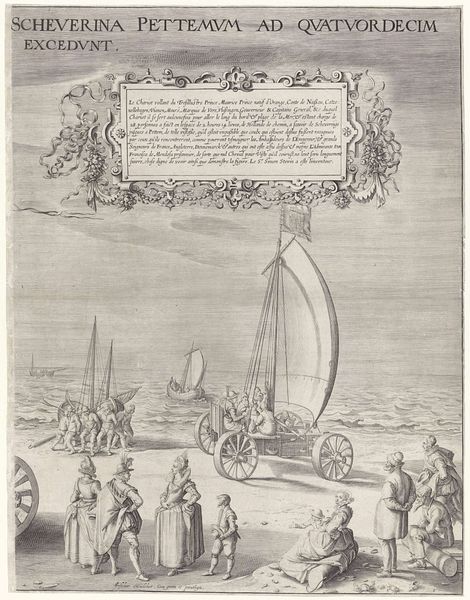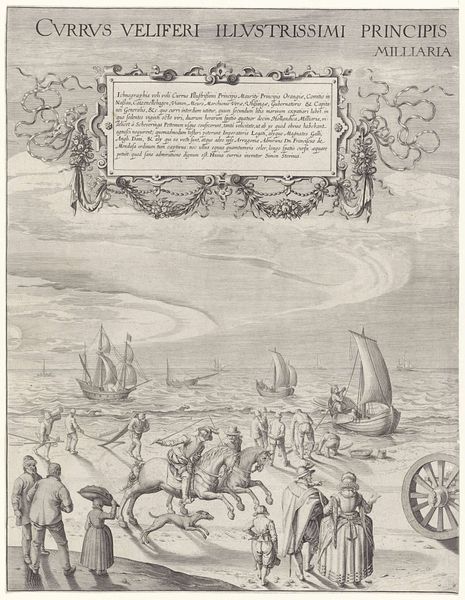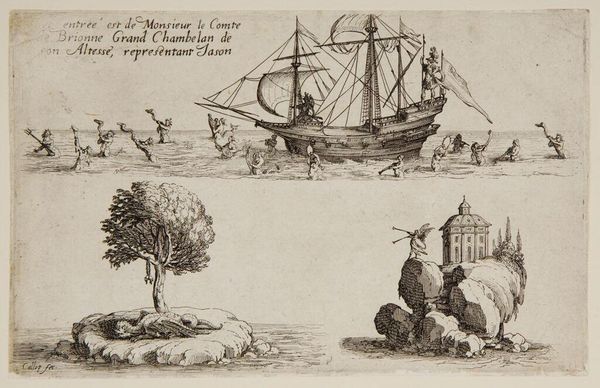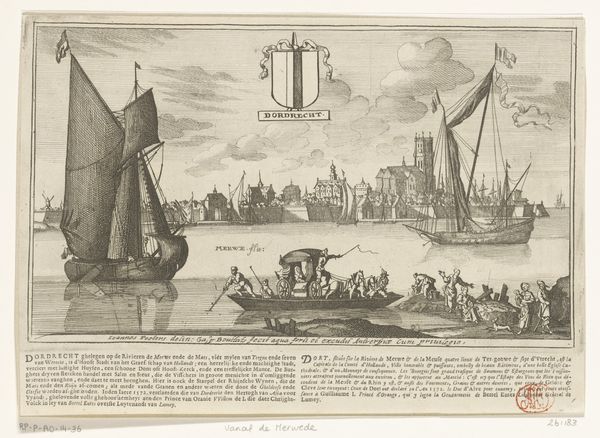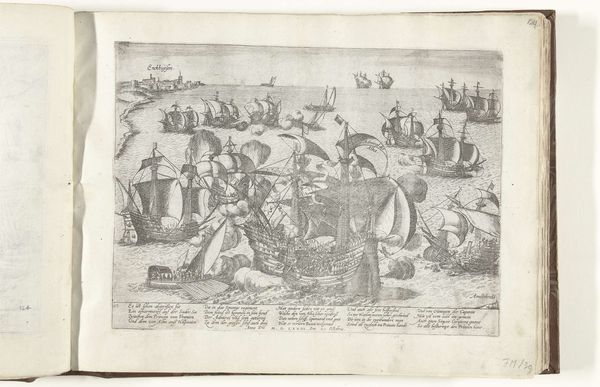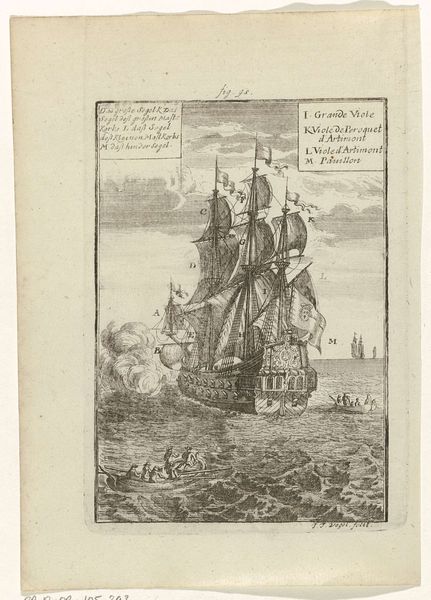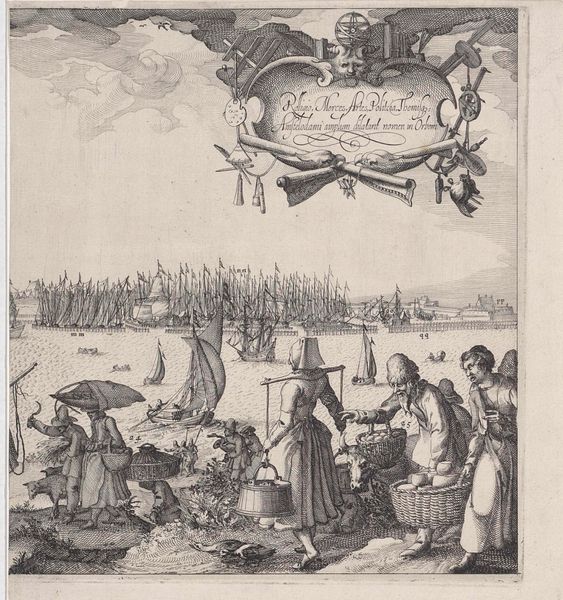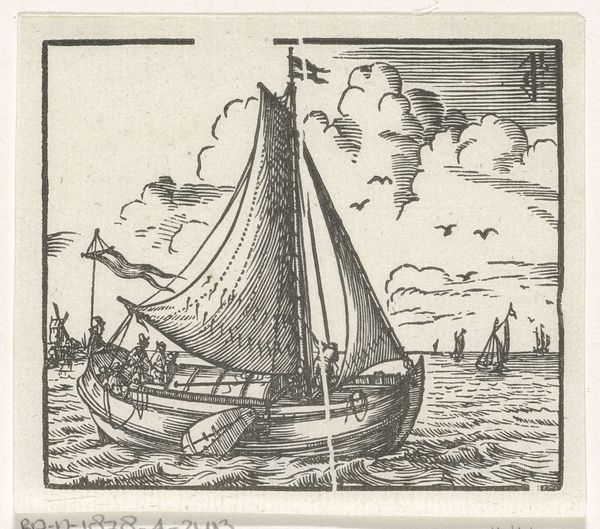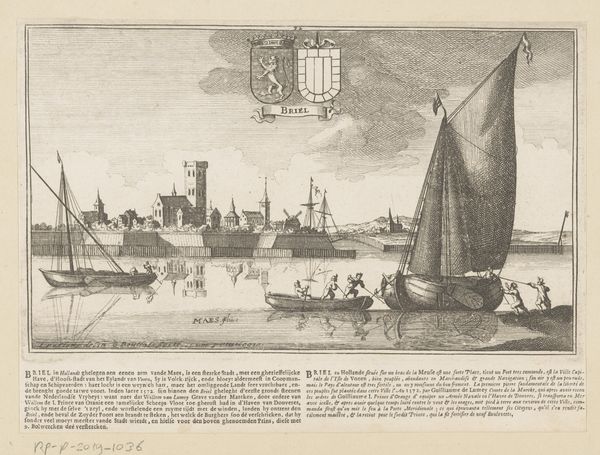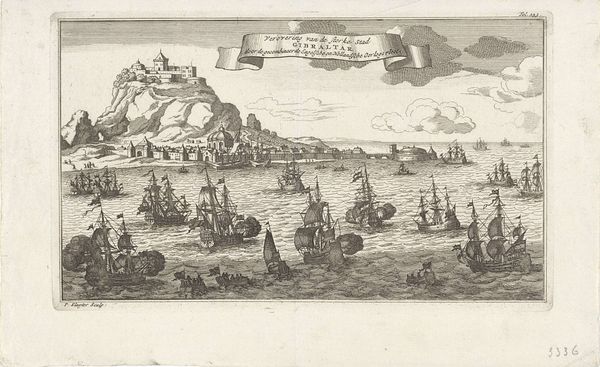
Vissers en landlieden, de zeilwagen en edelen in Holland, ca. 1600 1608 - 1610
0:00
0:00
print, engraving
#
dutch-golden-age
# print
#
landscape
#
genre-painting
#
history-painting
#
engraving
Dimensions: height 76 mm, width 178 mm
Copyright: Rijks Museum: Open Domain
Curator: This print, held here at the Rijksmuseum, is called "Vissers en landlieden, de zeilwagen en edelen in Holland," which translates to "Fishermen and Peasants, the Sail-Wagon and Nobles in Holland." Claes Jansz. Visscher created it around 1608 to 1610 using engraving techniques. Editor: It feels like a window into a bustling world, even though it’s just lines on paper. The contrasts in the figures and details pull my eye around – from the fishermen on the left to the... what are those wheeled sailboats? Curator: Ah, the "zeilwagen"! Sail-wagons. Very trendy among the elite for seaside travel in that era. It's a window, yes, into the complex social strata of the Dutch Golden Age. You have the working class contrasted against the nobility. Editor: Right. And how they are positioned! The nobles almost seem to observe the rest of the population, as if watching a stage play, no? What’s striking is how this scene encapsulates economic activity and leisure – a snapshot of Holland's identity around 1600. It's like Visscher distilled the key ingredients. Curator: Visscher often explored the landscape as a symbol of cultural identity. Consider how, even within this rather small print, you can trace not only social but moral and psychological narratives. Look at how industriousness versus extravagance are subtly portrayed in the fishermen vis-à-vis the sail-wagon riders, for example. Each group symbolizes certain Dutch values that were emerging at that time. Editor: So, it's not just a record but an argument for specific values. I find it so clever how a seemingly straightforward depiction of different social classes intertwines deeper layers of cultural and societal values. Curator: Exactly. Think about how the landscape provides context; the sky almost seems limitless, indicative of possibility, a rising nation with overseas power represented on a single piece of paper. It is more than documentary. Editor: The nuances of the period leap out, from maritime endeavors to fashion statements—a potent blend. Thank you; now, when I revisit it, I’ll carry those observations with me. Curator: My pleasure. Reflecting on this piece, the Golden Age becomes a little more present and palpable.
Comments
No comments
Be the first to comment and join the conversation on the ultimate creative platform.
